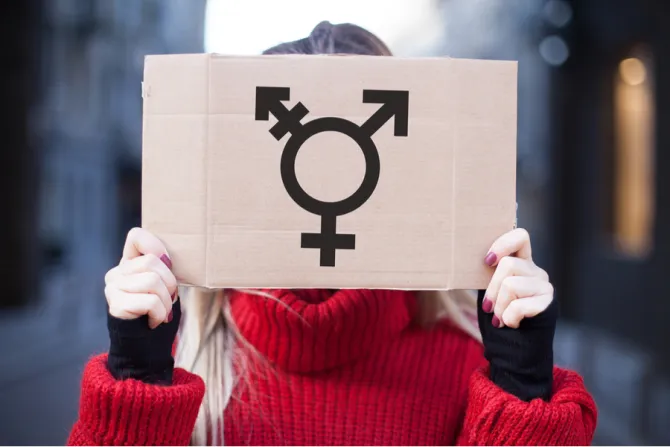London, England, Jul 18, 2019 / 16:30 pm
A new study suggests a link between autism, autistic traits, and identifying as transgender or non-binary, raising new questions about the growing use of so-called "gender transition" procedures as a treatment for gender dysphoria.
The study, which was released July 14 and will appear in the September issue of the academic journal European Psychiatry, was led by Dr. Steven Stagg of Anglia Ruskin University in the United Kingdom. The study examined 177 people who identify as transgender, non-binary, or as the gender of their biological sex.
A person who identifies as "non-binary," which is also referred to as "genderqueer," identifies as neither male nor female or on the male/female binary. A person who identifies as transgender identifies as the opposite sex than their biological sex. A transgender person may opt to undergo cross-sex hormonal or surgical treatments in order to better resemble the gender with which they identify.
Of the 177 people studied, four percent of those identifying their gender with their biological sex were diagnosed with autism. For the transgender or non-binary group, that figure rose to 14%. An additional 28% of the transgender or non-binary group exhibited traits that would result in an autism diagnosis, which the authors of the study say could mean that autism is potentially being underdiagnosed, particularly among girls.
Among the autistic traits identified by Stagg were a difficulty in empathizing, as well as "an overreliance on systematic, rule-based reasoning."
"One of the striking findings was the number of individuals born female who met the cut off for autism spectrum disorder. This is particularly important given that individuals born female are twice as likely to be referred to gender identity clinics," said Stagg.
In England, girls make up 74% patients at the country's only gender clinic for minors, Tavistock. In 2019, more than half the patients referred to Tavistock were under the age of 14. Data has shown that 2.8 girls are referred to Tavistock for every boy.
"People with autism are also more likely to seek unequivocal answers to the complex issues surrounding gender identity," said Stagg. Given that the study also suggested that autism is underdiagnosed in girls, this could be contributed to the percentage of girls seeking gender reassignment.
The number of minor girls who have been referred to Tavistock has jumped from 32 in 2008-2009 to 1,740 in 2018-2019. In July, the UK government announced an inquiry into why so many young girls were seeking to change their gender.
"The statistics we have been made aware of show that more and more young people, particularly girls, are using health services to explore changing their gender," said Penny Mordaunt, Minister for Women & Equalities.
"It is vitally important that we prioritize finding out why this is the case, making sure we gain an understanding of the driving factors behind this whilst doing everything we can to support these individuals and their families," she said.
Stagg suggested that gender clinics screen for autism before performing any sort of treatment, and then adapt their approach as necessary.
While the Stagg study was small, it is not the first time that a link between autism and identifying as transgendered has been identified. A 2018 report from Slate noted that researchers began in the 1990s to study the co-occurence between gender dysphoria and autism spectrum disorder.
Slate reported a "growing consensus" in the medical community that there is a disproprortionate correlation between the two.
Ryan Anderson, a senior research fellow at the Heritage Foundation and the author of "When Harry Became Sally: Responding to the Transgender Moment" told CNA that this study is further proof of how little understanding there is about the best means of treating cases of gender dysphoria.
"This is another in an ever-growing list of studies which reveal just how little we know about the underlying causes of gender dysphoria," said Anderson.
(Story continues below)
"It should prompt people to exercise great caution before making any life-altering medical interventions on the bodies of young people," he added.
In June, the Vatican's Congregation for Catholic Education released a document warning against the "radical separation between gender and sex, with the former having priority over the later," and the damage it was doing to society and individuals.
"In all such [gender] theories, from the most moderate to the most radical, there is agreement that one's gender ends up being viewed as more important than being of male or female sex," the document stated.


